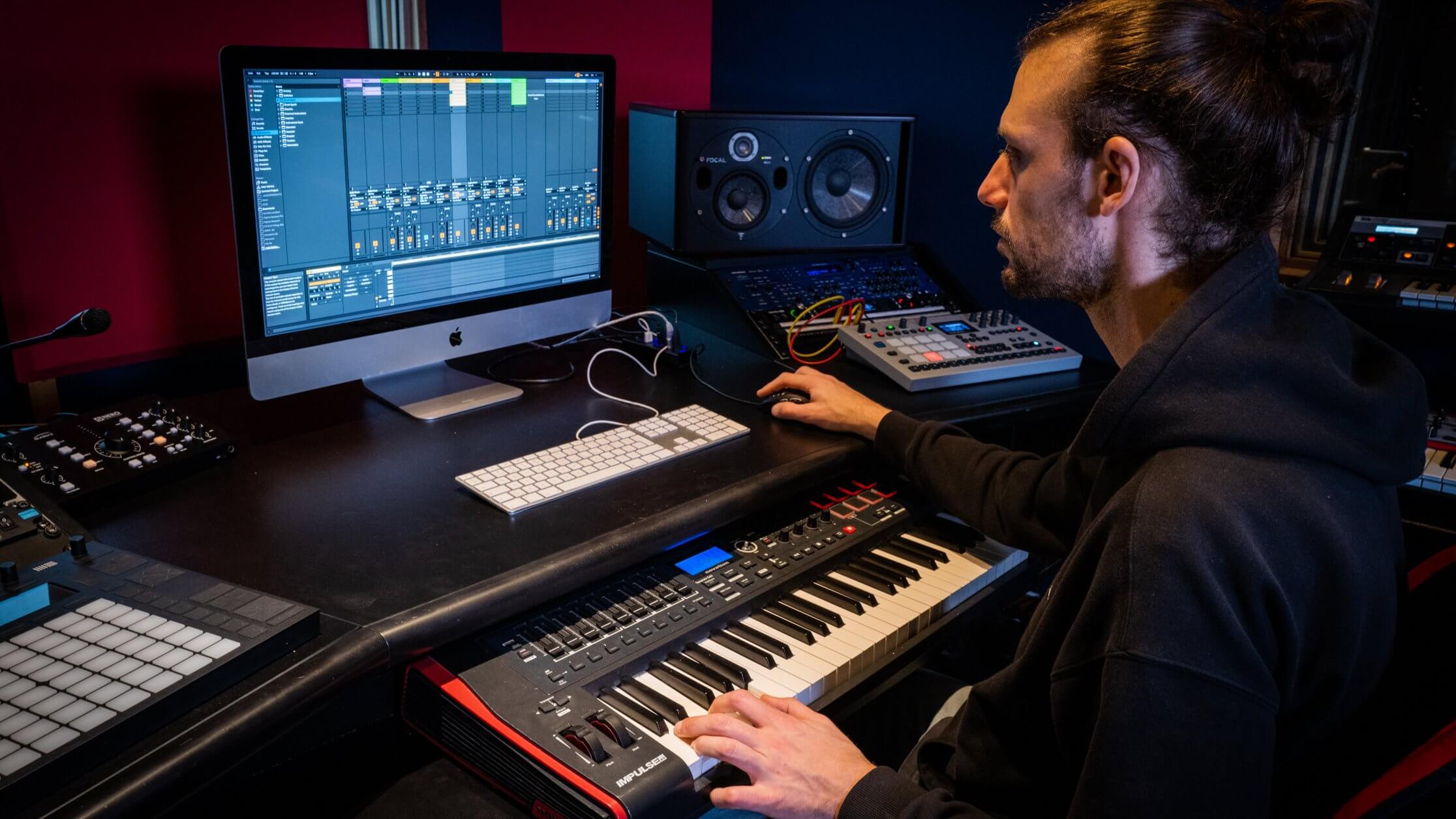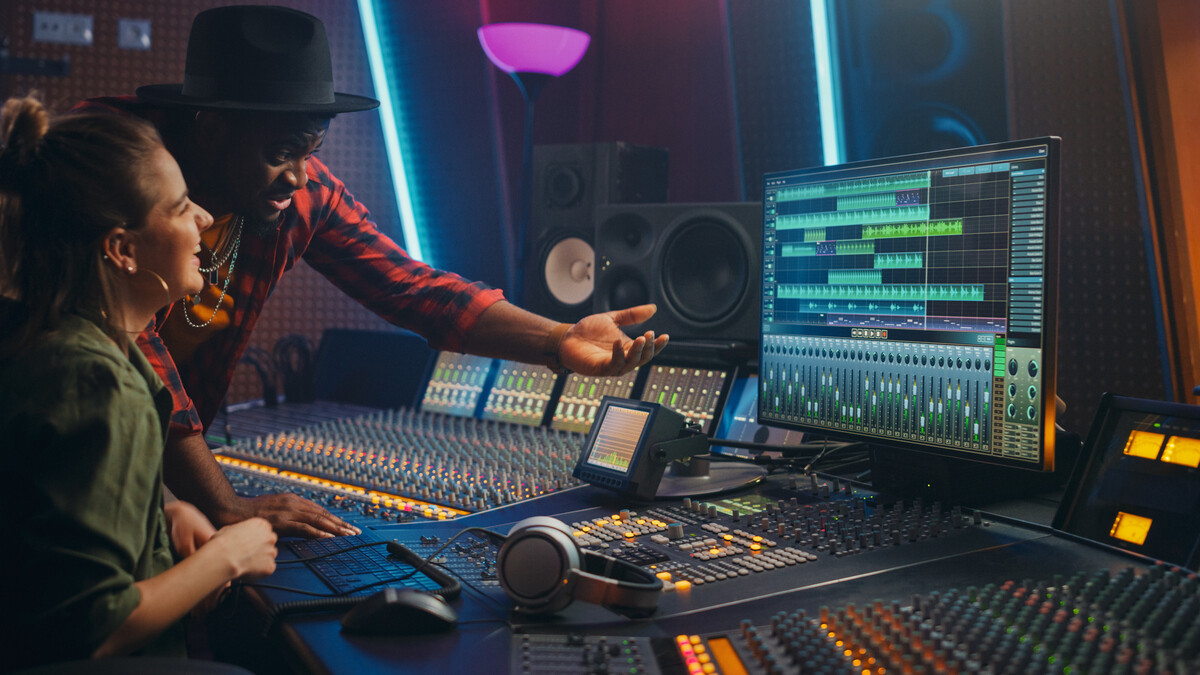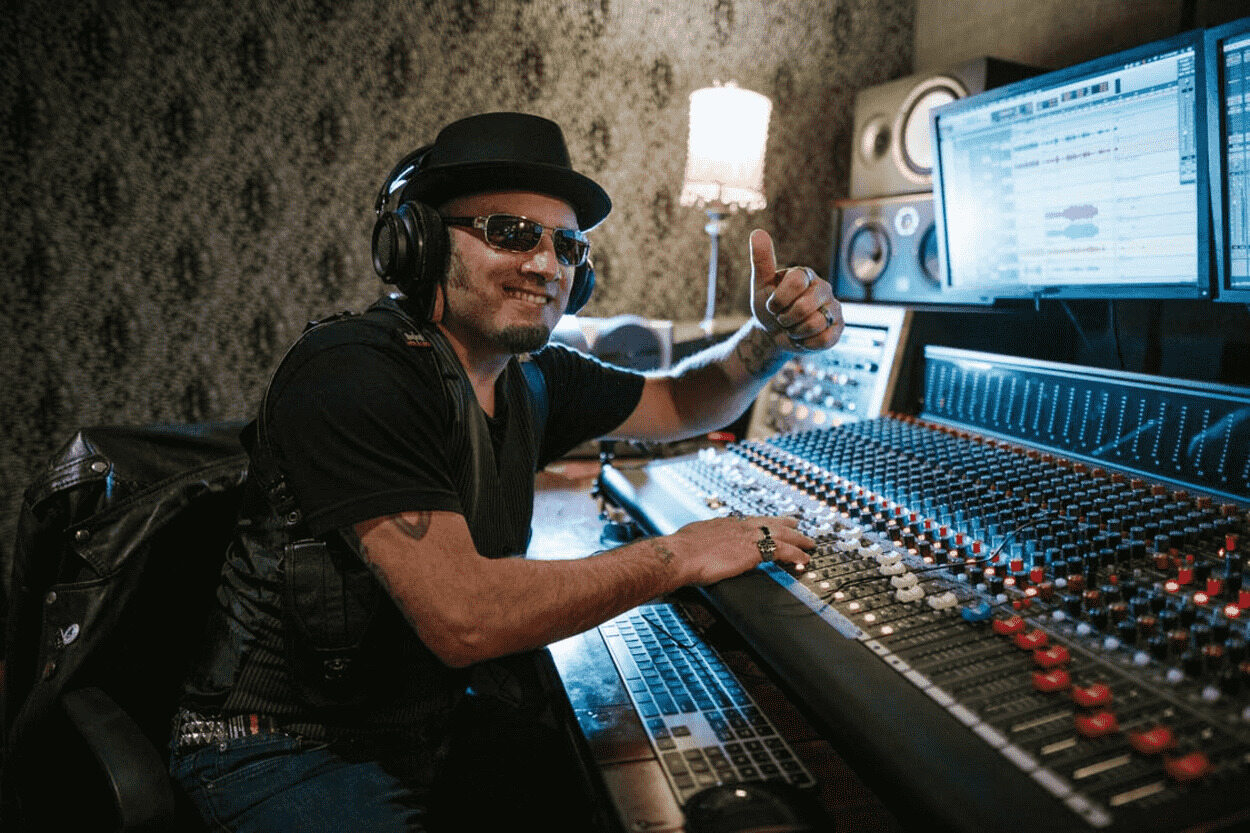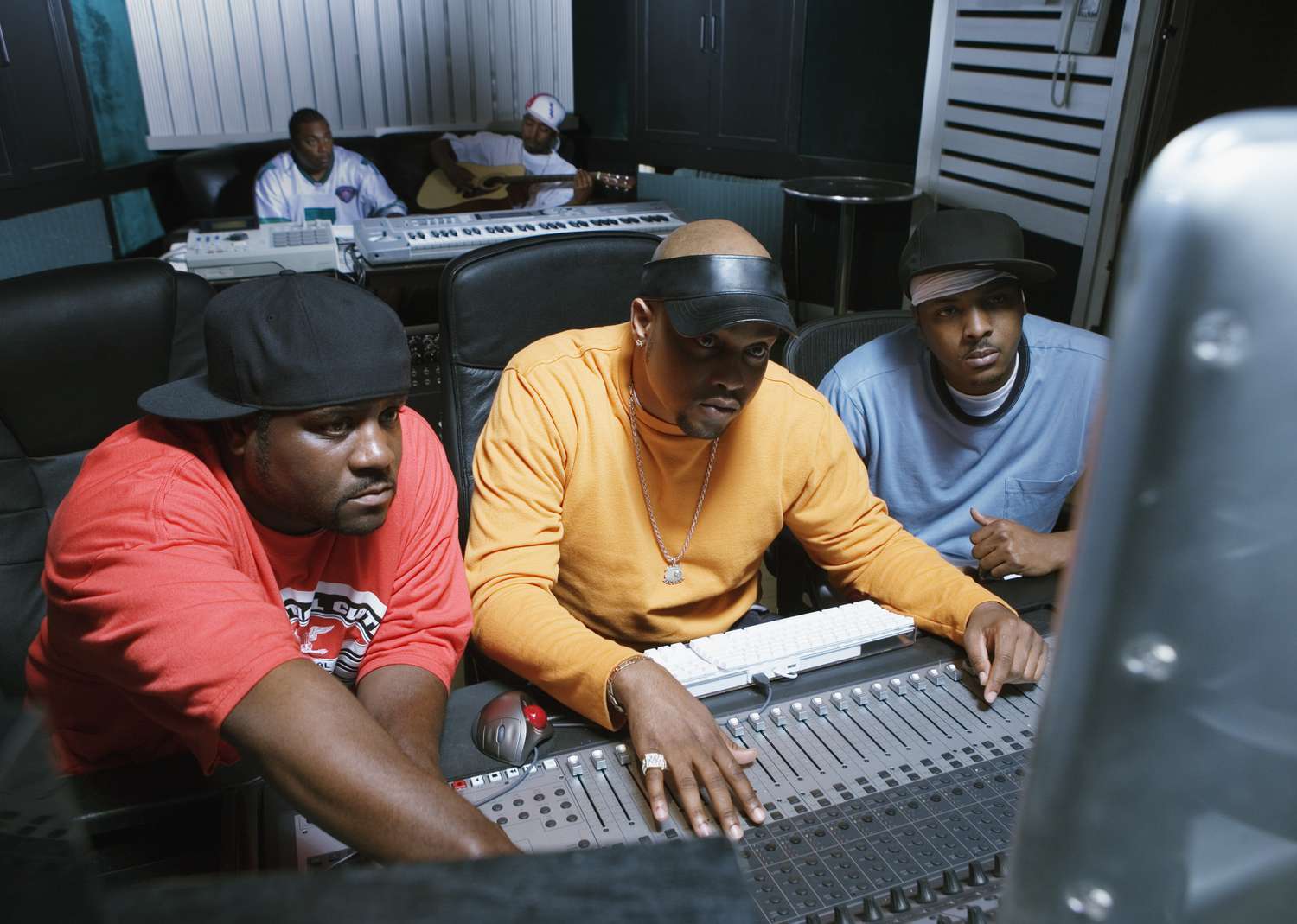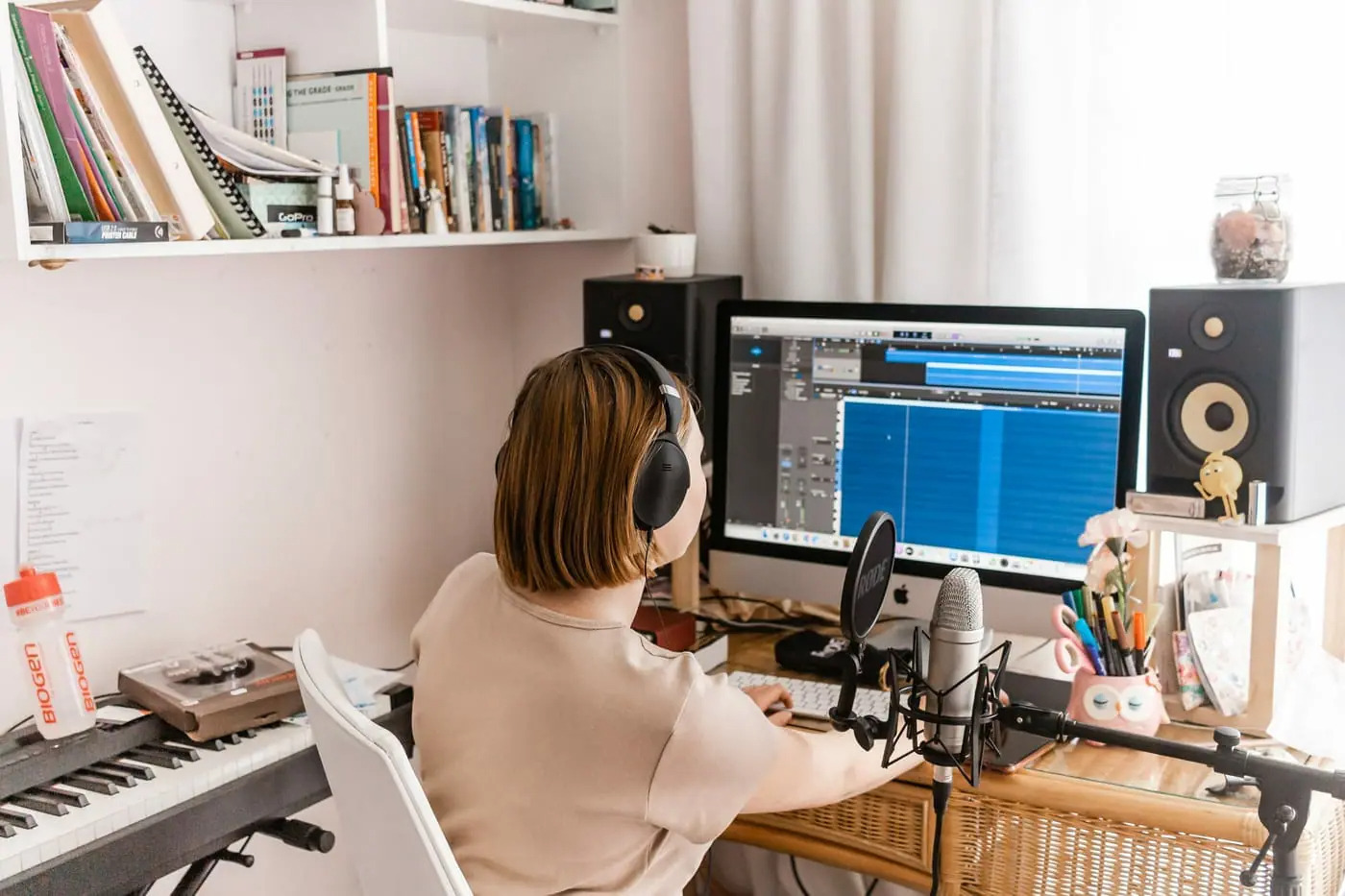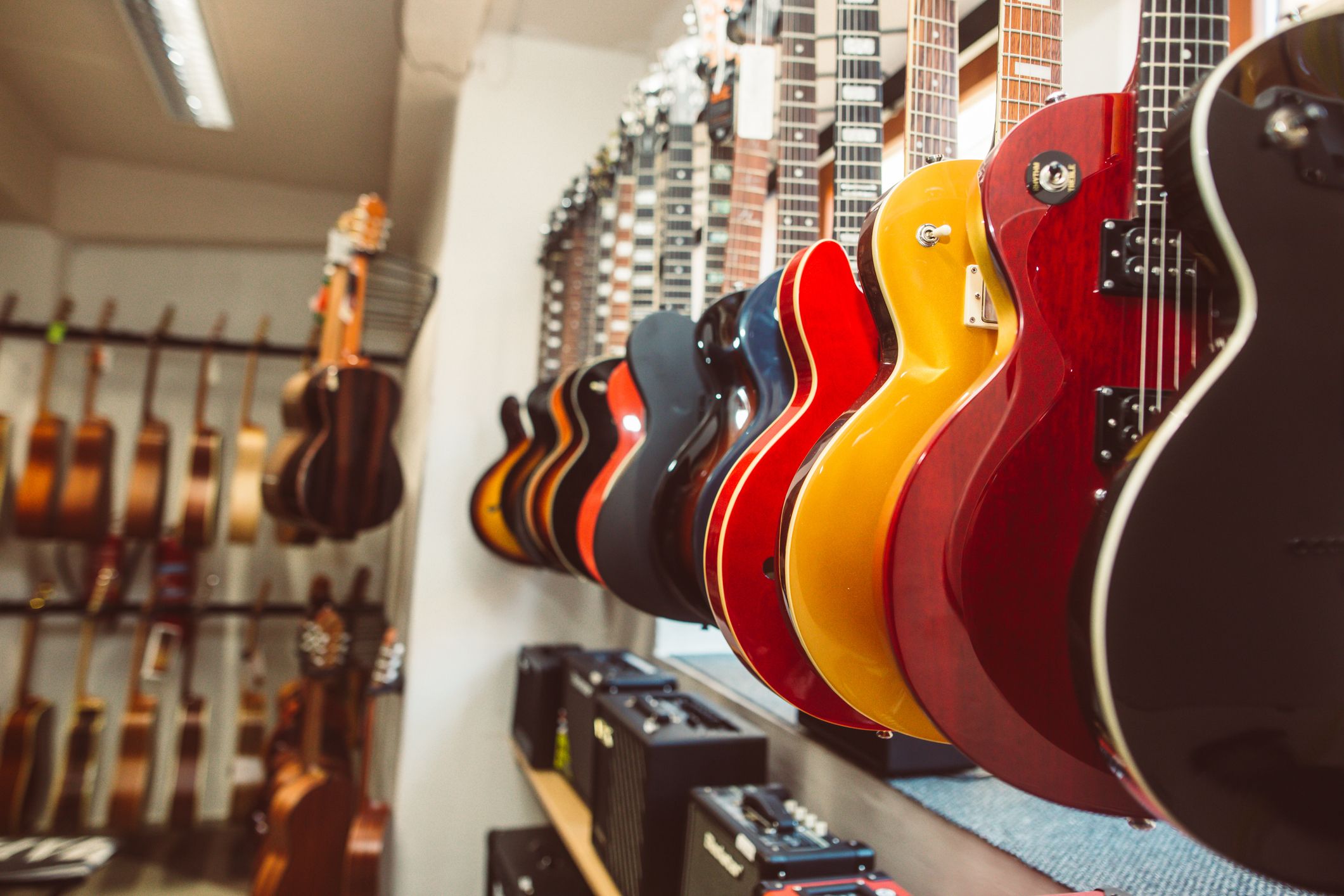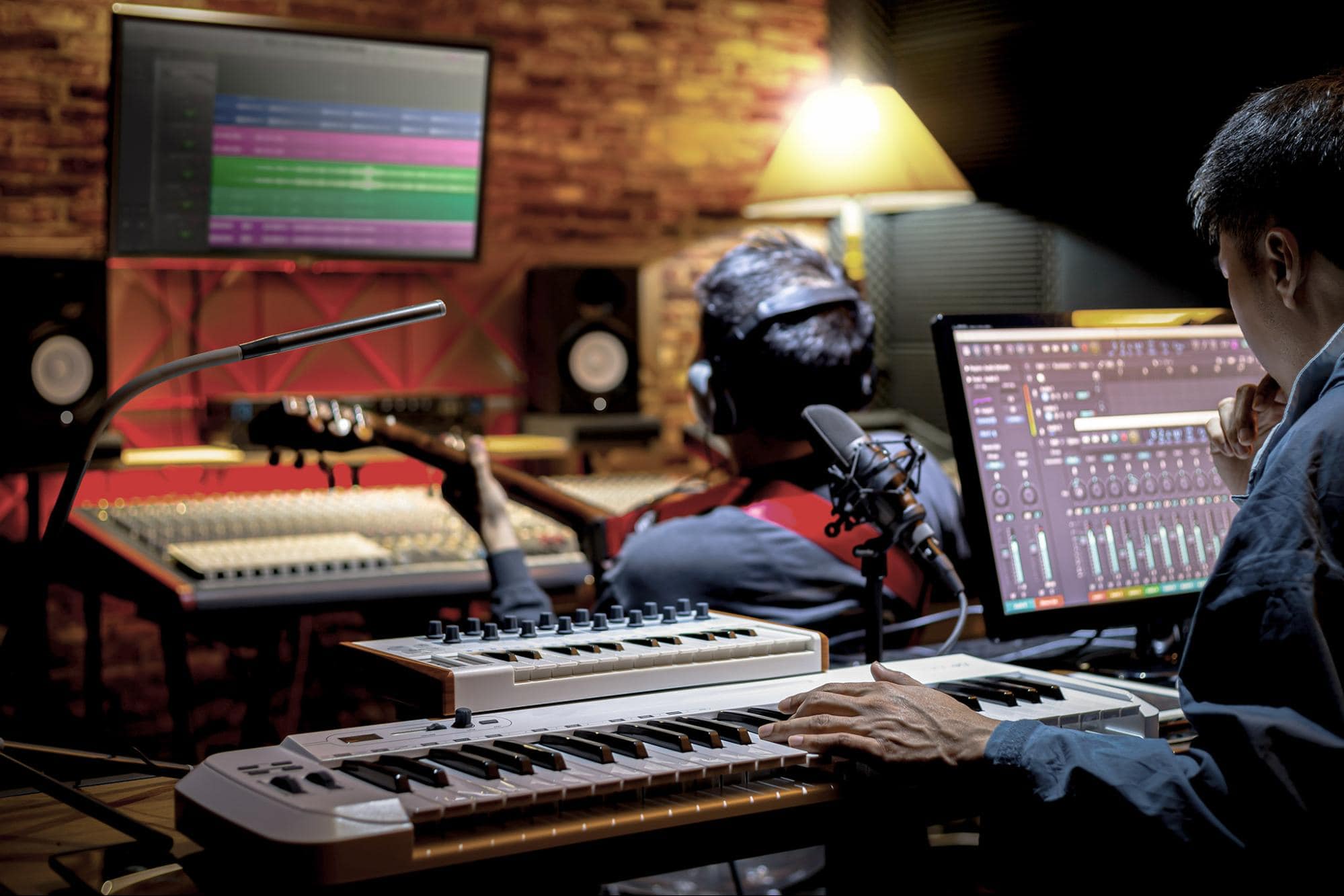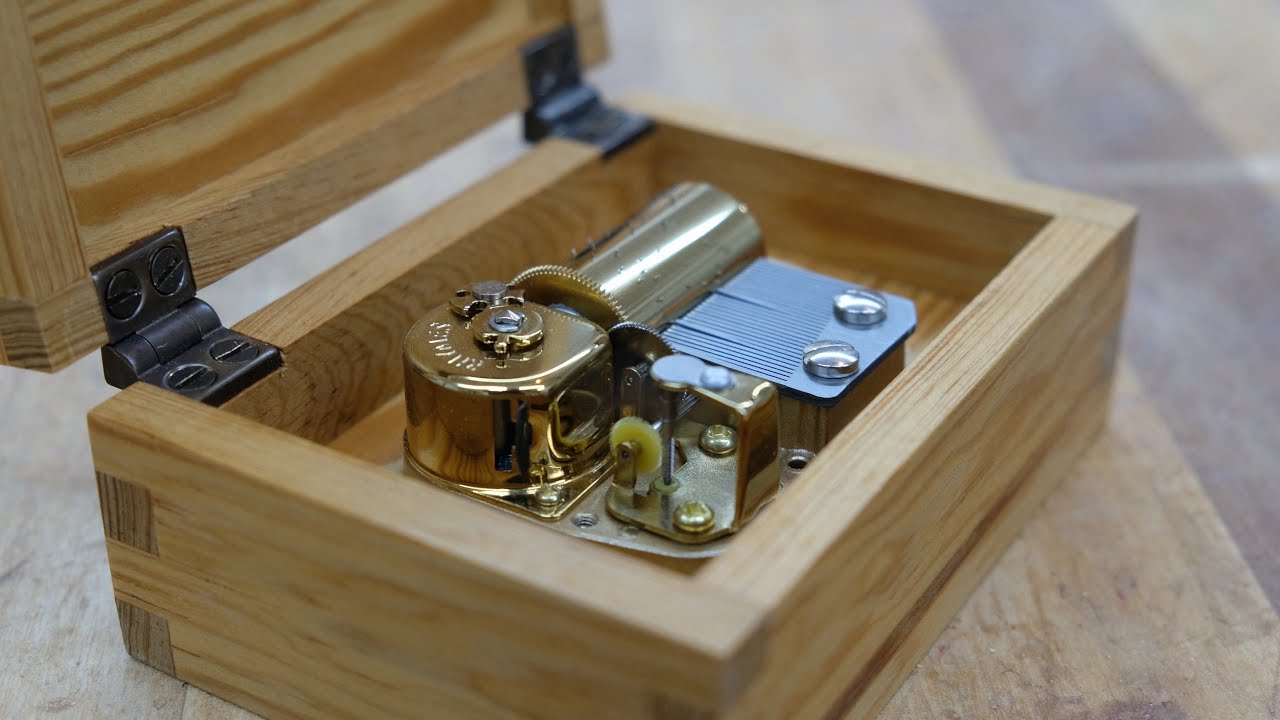Home>Production & Technology>Producer>What Does A Beginner Music Producer Need
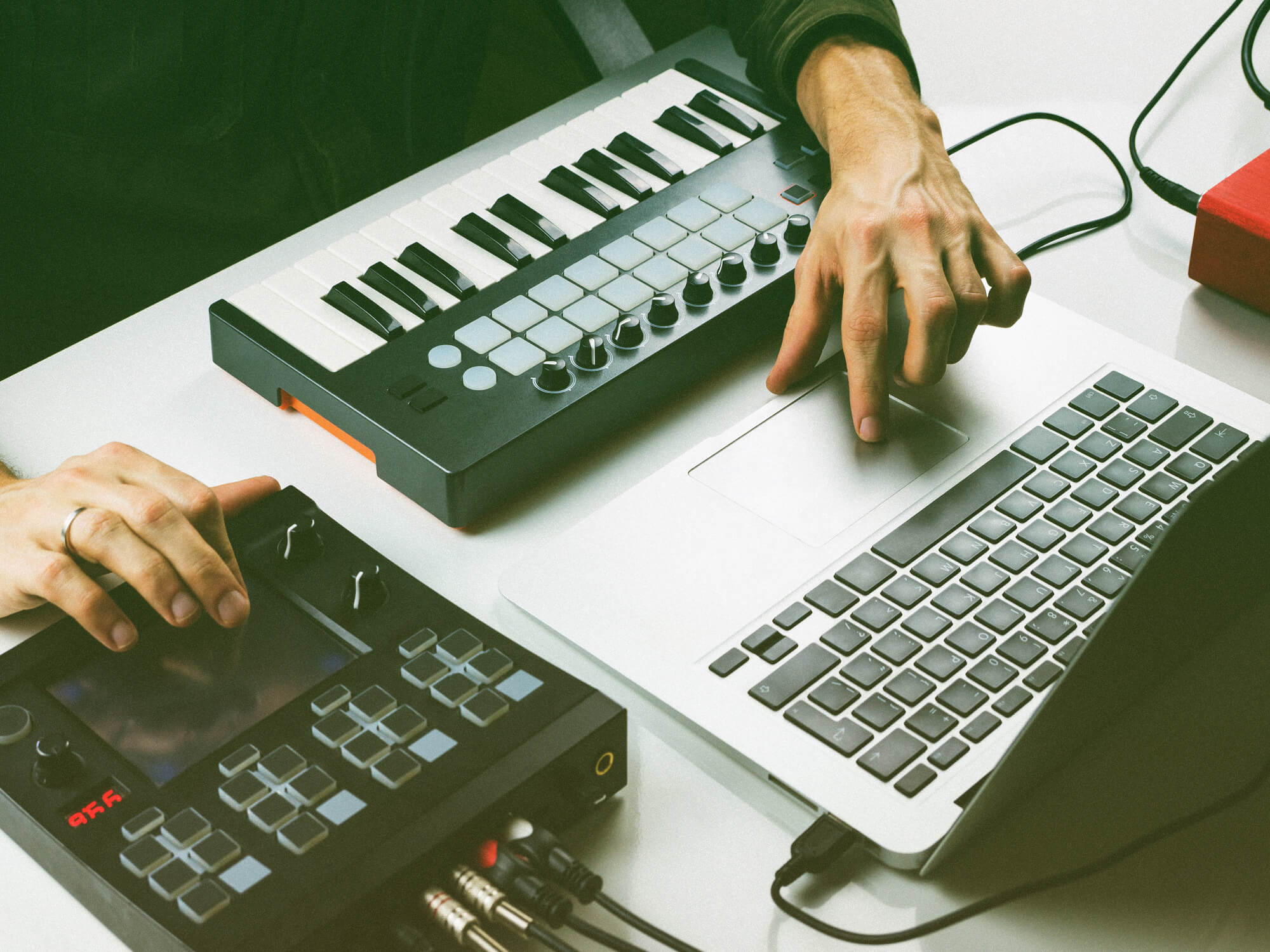

Producer
What Does A Beginner Music Producer Need
Published: March 6, 2024
Discover the essential tools and skills a beginner music producer needs to kickstart their career in the industry. From software to hardware, learn what it takes to become a successful producer.
(Many of the links in this article redirect to a specific reviewed product. Your purchase of these products through affiliate links helps to generate commission for AudioLover.com, at no extra cost. Learn more)
Table of Contents
Computer
The computer is the cornerstone of a music producer's setup. It serves as the central hub for running the digital audio workstation (DAW) and processing all the audio data. For a beginner music producer, selecting the right computer is crucial to ensure smooth and efficient music production.
Key Considerations for Choosing a Computer:
-
Processing Power: A potent processor is essential for handling the complex computations involved in music production. Look for multi-core processors with high clock speeds to ensure seamless performance, especially when working with multiple tracks and plugins.
-
RAM: Adequate RAM is vital for smooth multitasking and efficient handling of large audio files. A minimum of 8GB is recommended, but for more demanding projects, 16GB or higher can significantly enhance the producer's workflow.
-
Storage: Opt for a computer with ample storage space, preferably a solid-state drive (SSD) for faster data access. Music projects can consume considerable disk space, so having sufficient storage is crucial to accommodate the growing library of audio files and plugins.
-
Operating System: While both Windows and macOS are viable options, the choice often comes down to personal preference and compatibility with preferred music production software.
-
Graphics Card: While not as critical as other components, a dedicated graphics card can contribute to smoother visual performance within the DAW and when working with graphic-intensive plugins.
Additional Tips:
-
Portability: For producers on the go, a laptop offers the flexibility to work from various locations. Look for a balance between performance and portability when selecting a laptop for music production.
-
Upgradability: Consider a desktop computer if the potential for future upgrades is important. Desktops often allow for easier component upgrades, such as adding more RAM or swapping out the processor.
-
Compatibility: Ensure that the chosen computer is compatible with the preferred DAW and any external hardware, such as audio interfaces and MIDI controllers.
By carefully considering these factors and selecting a computer that aligns with the producer's specific needs and budget, beginners can lay a solid foundation for their music production journey. The right computer can significantly impact the efficiency, creativity, and overall experience of music production, empowering beginners to dive into the world of producing with confidence.
Digital Audio Workstation (DAW)
A digital audio workstation (DAW) is the primary software tool used by music producers to record, edit, mix, and arrange audio tracks. It serves as the creative canvas where producers bring their musical ideas to life, offering a comprehensive suite of features and tools tailored for music production. For beginners venturing into music production, selecting the right DAW is a pivotal decision that can significantly influence their workflow and creative capabilities.
Key Considerations for Choosing a DAW:
-
User Interface and Workflow: The user interface of a DAW plays a crucial role in the producer's experience. It should be intuitive and conducive to the producer's creative process, allowing for efficient navigation and seamless access to essential functions such as track recording, editing, and mixing.
-
Feature Set and Flexibility: Different DAWs offer varying feature sets, ranging from basic to advanced functionalities. Beginners should assess their specific needs and musical preferences to determine which DAW aligns best with their creative vision. Key features to consider include MIDI editing, audio quantization, virtual instrument support, and plugin compatibility.
-
Compatibility and Support: It's essential to ensure that the chosen DAW is compatible with the producer's operating system and hardware setup. Additionally, evaluating the availability of tutorials, user communities, and technical support can aid beginners in overcoming potential learning curves and technical challenges.
-
Scalability and Upgradability: As beginners progress in their music production journey, the scalability of the chosen DAW becomes increasingly important. The ability to expand the DAW's capabilities through additional plugins, virtual instruments, and advanced features can accommodate the producer's evolving skill set and creative aspirations.
Popular DAW Options for Beginners:
1. Ableton Live:
Ableton Live is renowned for its intuitive workflow, robust MIDI capabilities, and real-time performance features. It is favored by electronic music producers and live performers due to its seamless integration of production and live performance functionalities.
2. FL Studio:
FL Studio, known for its user-friendly interface and extensive stock plugins, appeals to beginners seeking a comprehensive music production environment. Its pattern-based sequencing and step sequencer are particularly advantageous for creating rhythmic and melodic patterns.
3. Logic Pro X:
Exclusive to macOS, Logic Pro X offers a rich set of features, including a vast library of virtual instruments and audio effects. Its intuitive interface and comprehensive production tools make it an attractive option for beginners entering the world of music production on Apple platforms.
By carefully evaluating these considerations and exploring the diverse offerings of popular DAWs, beginners can make an informed decision that aligns with their creative vision and sets the stage for a fulfilling music production journey. The chosen DAW serves as the foundational tool through which beginners will craft their musical expressions, experiment with sound, and embark on an inspiring creative odyssey.
MIDI Controller
A MIDI controller is a fundamental tool for music producers, offering tactile interaction and expressive control over virtual instruments, software synthesizers, and DAW parameters. For beginners delving into music production, incorporating a MIDI controller into their setup can elevate the creative process and enable a more hands-on approach to crafting musical arrangements.
Key Features and Considerations:
-
Keyboard vs. Pad Controllers: MIDI controllers come in various forms, with keyboard and pad controllers being the most prevalent options. Keyboard controllers, resembling traditional pianos, provide a familiar interface for playing melodies and harmonies, making them ideal for producers with a background in piano or music theory. On the other hand, pad controllers offer responsive pads that facilitate rhythmic programming, drum sequencing, and dynamic performance control, catering to genres like electronic music and hip-hop.
-
Velocity Sensitivity and Aftertouch: Velocity sensitivity, the ability to detect the force or speed of key or pad presses, and aftertouch, which enables additional expression after a key or pad is held down, are crucial features that contribute to the nuanced articulation of musical performances. These capabilities allow producers to infuse their music with dynamics and emotion, mimicking the natural responsiveness of acoustic instruments.
-
Knobs, Faders, and Encoders: MIDI controllers often feature assignable knobs, faders, and encoders that provide hands-on control over parameters such as volume, panning, filter cutoff, and effects settings within the DAW and virtual instruments. This tactile manipulation of sound parameters empowers producers to sculpt and shape their sonic creations in real time, fostering a deeper connection with the music production process.
-
Integration and Compatibility: When selecting a MIDI controller, compatibility with the chosen DAW and music production software is paramount. Many controllers offer seamless integration with popular DAWs, allowing for automatic mapping of controls and streamlined operation within the production environment. Additionally, MIDI controllers with customizable mappings provide flexibility for adapting the control surface to suit the producer's specific workflow and preferences.
Popular MIDI Controller Options for Beginners:
1. Novation Launchkey:
The Novation Launchkey series combines a velocity-sensitive keyboard with responsive pads, making it a versatile choice for producers seeking a balance between melodic expression and rhythmic control. Its integration with Ableton Live and other major DAWs makes it an appealing option for beginners exploring electronic music production.
2. Akai MPK Mini:
Compact yet feature-packed, the Akai MPK Mini offers a blend of velocity-sensitive keys, responsive pads, and assignable knobs, catering to producers with limited space and a penchant for beat-making and melodic composition. Its plug-and-play functionality and comprehensive software bundle make it an accessible entry point for aspiring music producers.
3. Arturia KeyLab Essential:
The Arturia KeyLab Essential series combines a premium keyboard with an array of tactile controls, including faders and encoders, providing a comprehensive platform for expressive performances and intricate sound manipulation. Its seamless integration with Analog Lab software and DAWs makes it an enticing option for beginners seeking a sophisticated yet user-friendly MIDI controller.
By embracing the capabilities of a MIDI controller and considering the aforementioned features and popular options, beginners can enrich their music production journey with tactile creativity, expressive performance, and intuitive control over their sonic canvases. The incorporation of a MIDI controller not only enhances the technical aspects of music production but also fosters a deeper connection between the producer and their musical expressions, laying the groundwork for boundless creative exploration.
Audio Interface
An audio interface stands as a pivotal component in the toolkit of a burgeoning music producer, serving as the bridge between the analog and digital realms of audio. For beginners venturing into the realm of music production, understanding the role and significance of an audio interface is paramount to establishing a high-quality and efficient production setup.
Key Functions and Importance:
The primary function of an audio interface is to convert analog audio signals from microphones, instruments, and other sound sources into digital data that can be processed by the computer. Conversely, it also performs the reverse process, converting digital audio from the computer into analog signals for output through speakers or headphones. This bidirectional conversion process ensures pristine audio capture, playback, and monitoring, thereby maintaining the integrity of the producer's sonic creations.
Furthermore, audio interfaces offer crucial features such as preamps, which amplify mic and instrument signals with minimal noise and distortion, and high-quality analog-to-digital converters (ADCs) and digital-to-analog converters (DACs) that uphold the fidelity and resolution of audio signals. These attributes are particularly vital for capturing nuanced performances, preserving the tonal nuances of instruments, and achieving professional-grade audio recordings.
Considerations for Selection:
When selecting an audio interface, beginners should consider the number and type of inputs and outputs required for their production needs. For instance, producers working with multiple microphones or instruments simultaneously may opt for interfaces with multiple XLR and 1/4" inputs, while those emphasizing portability may prioritize compact interfaces with fewer I/O options.
Additionally, the quality of preamps, the bit depth and sample rate supported, low-latency monitoring capabilities, and compatibility with recording software are pivotal factors to evaluate. A reliable and feature-rich audio interface can significantly enhance the producer's recording and mixing workflow, facilitating seamless integration with their digital audio workstation (DAW) and ensuring minimal latency during recording and monitoring sessions.
Popular Audio Interface Options for Beginners:
-
Focusrite Scarlett 2i2:
Renowned for its acclaimed preamps, solid build quality, and user-friendly design, the Focusrite Scarlett 2i2 offers a compelling entry point for beginners seeking a reliable and versatile audio interface. With its combination of XLR and 1/4" inputs, high-quality converters, and intuitive controls, it caters to a wide range of recording scenarios and musical genres. -
PreSonus AudioBox USB 96:
The PreSonus AudioBox USB 96 presents an affordable yet feature-packed audio interface tailored for aspiring music producers. Its robust build, Class A mic preamps, and compatibility with Studio One Artist DAW make it an attractive option for beginners seeking a comprehensive recording solution. -
Universal Audio Apollo Twin MKII:
Positioned as a premium offering, the Universal Audio Apollo Twin MKII boasts top-tier audio quality, real-time UAD processing, and impeccable build craftsmanship. While targeted at a higher price point, its pristine audio fidelity and extensive plugin ecosystem make it a compelling investment for producers aiming for professional-grade recordings and mixing capabilities.
By comprehending the pivotal role of an audio interface, considering the essential features, and exploring popular options, beginners can make informed decisions that align with their recording needs and budgetary constraints. The integration of a reliable audio interface not only ensures the fidelity and integrity of audio recordings but also lays the groundwork for seamless and professional-grade music production endeavors.
Studio Monitors
Studio monitors, also known as reference monitors or studio speakers, are a cornerstone of any music production setup. They play a critical role in accurately reproducing audio with precision and transparency, allowing producers to make informed decisions during the mixing and mastering stages of music production. For beginners embarking on their music production journey, understanding the significance of studio monitors and selecting the right pair is paramount to cultivating a discerning ear and achieving professional-grade sound quality.
Key Attributes and Importance:
Studio monitors are engineered to deliver a flat frequency response, meaning they reproduce audio without coloration or emphasis on specific frequencies. This neutrality enables producers to perceive their music as it truly sounds, unaltered by the sonic characteristics of consumer-grade speakers or headphones. By providing an accurate representation of the audio signal, studio monitors empower producers to assess the tonal balance, spatial imaging, and dynamic range of their mixes with precision, ultimately leading to polished and cohesive musical compositions.
Furthermore, the design and construction of studio monitors prioritize sonic clarity and transient response, allowing producers to discern subtle details within their music, such as reverb tails, instrument separation, and frequency masking. This level of sonic transparency is indispensable for identifying and rectifying mixing flaws, ensuring that the final mix translates effectively across various playback systems and environments.
Considerations for Selection:
When selecting studio monitors, beginners should consider factors such as driver size, amplifier power, frequency response, and room acoustics. The size of the drivers, typically ranging from 5 to 8 inches, influences the dispersion of sound and the depth of bass reproduction, with larger drivers offering extended low-frequency response. Additionally, the amplifier power rating should align with the acoustic characteristics of the producer's workspace, ensuring optimal performance without distortion or strain.
The frequency response of studio monitors, spanning from the lowest bass frequencies to the highest treble frequencies, should exhibit a balanced and linear representation of the audio spectrum. This ensures that producers can accurately assess the entire frequency range of their music, facilitating informed EQ adjustments and tonal shaping. Moreover, considering the acoustic properties of the production environment and implementing acoustic treatment can enhance the accuracy and reliability of studio monitor playback, mitigating issues related to reflections, standing waves, and frequency anomalies within the listening space.
Popular Studio Monitor Options for Beginners:
-
KRK Rokit Series:
The KRK Rokit series has garnered acclaim for its balanced sound signature, robust build quality, and affordability, making it an accessible choice for beginners seeking reliable studio monitors with accurate sound reproduction. -
Yamaha HS Series:
Renowned for their precision and sonic transparency, the Yamaha HS series offers a flat frequency response and exceptional transient response, catering to producers striving for uncompromising audio fidelity and mix clarity. -
Presonus Eris Series:
The Presonus Eris series presents a compelling blend of affordability and accuracy, featuring acoustic tuning controls and versatile connectivity options, ideal for beginners establishing their home studio environments.
By comprehending the pivotal role of studio monitors, evaluating essential attributes, and exploring popular options, beginners can make informed decisions that align with their sonic preferences and production requirements. The integration of high-quality studio monitors not only facilitates precise mixing and mastering processes but also cultivates a critical listening environment essential for honing the producer's craft and achieving professional-grade audio productions.
Headphones
Headphones are an indispensable tool for music producers, offering a private and immersive listening experience essential for critical evaluation, sound isolation, and mobile production setups. As beginners delve into the realm of music production, the selection of suitable headphones holds significant implications for their mixing, monitoring, and creative decision-making processes.
Key Attributes and Importance:
The attributes of headphones, including frequency response, driver type, impedance, and comfort, play a pivotal role in their suitability for music production. A balanced frequency response is crucial, allowing producers to perceive the full spectrum of audio frequencies without exaggerated bass or treble, ensuring accurate tonal representation. Additionally, the type of drivers, whether dynamic, planar magnetic, or electrostatic, influences the transient response and spatial imaging of headphones, impacting the level of detail and clarity in audio playback.
The impedance of headphones, measured in ohms, affects their compatibility with audio interfaces and mobile devices, with lower impedance headphones being more suitable for direct connection to portable devices. Comfort is also paramount, especially during extended production sessions, with considerations such as earcup padding, headband adjustability, and overall weight contributing to prolonged wearability and fatigue reduction.
Considerations for Selection:
When selecting headphones for music production, beginners should assess the intended usage scenarios, whether for mixing, tracking, or casual listening. Open-back headphones, characterized by their open earcups and expansive soundstage, are favored for mixing and critical listening due to their natural and spacious sound reproduction. Conversely, closed-back headphones offer sound isolation and are well-suited for tracking and mobile production, providing a controlled listening environment and preventing sound leakage during recording sessions.
Furthermore, the portability, cable configuration, and foldable design of headphones are pertinent factors for producers requiring mobility and flexibility in their production setups. Detachable cables, inline microphone options, and collapsible earcup designs enhance the practicality and versatility of headphones, catering to on-the-go production needs and seamless integration with smartphones and laptops.
Popular Headphone Options for Beginners:
-
Audio-Technica ATH-M50x:
Renowned for their balanced sound signature, robust build quality, and swiveling earcup design, the Audio-Technica ATH-M50x offers a compelling blend of accuracy and portability, making them a popular choice for beginners seeking versatile headphones for mixing and tracking. -
Sennheiser HD 280 Pro:
With a closed-back design, excellent noise isolation, and a comfortable fit, the Sennheiser HD 280 Pro presents an affordable yet reliable option for producers prioritizing sound isolation during recording sessions and mobile production setups. -
Beyerdynamic DT 770 Pro:
Known for their exceptional comfort, detailed sound reproduction, and customizable impedance options, the Beyerdynamic DT 770 Pro caters to beginners seeking a tailored listening experience and extended wearability for prolonged production sessions.
By comprehending the pivotal role of headphones, evaluating essential attributes, and exploring popular options, beginners can make informed decisions that align with their production requirements and listening preferences. The integration of suitable headphones not only facilitates accurate monitoring and critical evaluation but also fosters a personalized and immersive sonic environment essential for honing the producer's craft and achieving professional-grade audio productions.
Microphones
Microphones are indispensable tools for capturing pristine audio recordings, essential for vocal performances, instrument miking, and sound effects acquisition in music production. As beginners embark on their journey in music production, understanding the types of microphones, their characteristics, and the intended applications is paramount to achieving professional-grade audio capture and fostering a versatile recording environment.
Key Microphone Types and Characteristics:
1. Condenser Microphones:
Condenser microphones are renowned for their sensitivity, wide frequency response, and transient accuracy, making them ideal for capturing detailed and nuanced sound sources. With their internal diaphragm and backplate configuration, condenser microphones excel in capturing vocals, acoustic instruments, and ambient sounds, delivering exceptional clarity and fidelity.
2. Dynamic Microphones:
Dynamic microphones are celebrated for their robust build, high SPL (sound pressure level) handling, and minimal sensitivity to handling noise, making them suitable for live performances, instrument amplification, and recording loud sound sources. Their rugged construction and versatile applications make dynamic microphones indispensable for capturing electric guitars, drums, and powerful vocal performances.
3. Ribbon Microphones:
Ribbon microphones exhibit a smooth and natural frequency response, characterized by their warm and vintage sonic characteristics. With their delicate ribbon element, these microphones excel in capturing the subtleties of acoustic instruments, brass instruments, and vocal performances, imparting a classic and rich tonal quality to recordings.
Considerations for Selection:
When selecting microphones, beginners should consider the intended recording applications, the sonic characteristics of the microphone, and the compatibility with their audio interface and preamps. Additionally, understanding the polar patterns of microphones, such as cardioid, omnidirectional, and figure-8, is crucial for tailoring the microphone's pickup pattern to specific recording scenarios, whether for isolating sound sources, capturing ambient room sounds, or achieving versatile recording capabilities.
Furthermore, assessing the microphone's frequency response, transient response, and self-noise characteristics aids in selecting the appropriate microphone for specific sound sources and musical genres. For vocal recording, a microphone with a smooth high-frequency response and low self-noise is desirable, while for instrument miking, a microphone with precise transient response and tailored frequency shaping may be preferred.
Popular Microphone Options for Beginners:
-
Audio-Technica AT2020:
The Audio-Technica AT2020 condenser microphone offers a balance of affordability and quality, featuring a wide dynamic range and a custom-engineered diaphragm for exceptional transient response, making it a versatile choice for vocal and instrument recording. -
Shure SM57:
Renowned for its durability and versatility, the Shure SM57 dynamic microphone is a staple in music production, excelling in capturing guitar amplifiers, snare drums, and live vocal performances with its robust build and tailored frequency response. -
Rode NT1-A:
The Rode NT1-A condenser microphone is acclaimed for its low self-noise, extended frequency response, and detailed transient capture, making it an excellent choice for studio vocals, acoustic instruments, and atmospheric recordings.
By comprehending the diverse characteristics of microphones, evaluating essential attributes, and exploring popular options, beginners can make informed decisions that align with their recording requirements and artistic vision. The integration of suitable microphones not only ensures the fidelity and versatility of audio capture but also lays the groundwork for expressive and professional-grade music production endeavors.
Cables and Connectors
Cables and connectors are the unsung heroes of a music producer's setup, serving as the essential conduits for transmitting audio signals between various components. From connecting microphones and instruments to audio interfaces and studio monitors, the selection of high-quality cables and connectors is paramount to maintaining signal integrity, minimizing interference, and ensuring reliable connectivity throughout the production chain.
Types of Cables and Connectors:
1. XLR Cables:
XLR cables are ubiquitous in music production, particularly for connecting microphones and audio interfaces. Known for their balanced configuration, XLR cables minimize noise and interference, making them ideal for capturing clean and noise-free audio signals, crucial for achieving pristine recordings and professional-grade vocal performances.
2. 1/4" TRS Cables:
1/4" TRS (Tip-Ring-Sleeve) cables are versatile workhorses, commonly used for connecting studio monitors, audio interfaces, and outboard gear. Their balanced nature and compatibility with a wide range of audio equipment make them indispensable for maintaining signal integrity and facilitating seamless audio routing within the production environment.
3. MIDI Cables:
MIDI cables play a pivotal role in transmitting musical data between MIDI controllers, synthesizers, and computer-based music production setups. Their low-latency and high-precision data transmission capabilities enable precise control over virtual instruments and external hardware, empowering producers to craft intricate musical arrangements and dynamic performances.
4. USB and Thunderbolt Cables:
With the proliferation of digital audio workstations and audio interfaces, USB and Thunderbolt cables have become integral for high-speed data transfer and audio connectivity. Their robust construction and high-bandwidth capabilities facilitate the seamless integration of audio interfaces, MIDI controllers, and external storage devices, ensuring efficient data exchange and low-latency performance.
Considerations for Selection:
When sourcing cables and connectors, beginners should prioritize quality, durability, and compatibility with their specific audio equipment. High-quality shielding, durable connectors, and reliable strain relief mechanisms are essential attributes that mitigate signal degradation, prevent cable damage, and uphold long-term reliability.
Furthermore, understanding the electrical specifications and impedance matching requirements of cables and connectors is crucial for maintaining signal integrity and minimizing signal loss over extended cable runs. For instance, selecting cables with appropriate impedance ratings for microphones and line-level signals ensures optimal signal transfer without compromising audio fidelity.
Additionally, investing in reputable and certified cables from trusted manufacturers mitigates the risk of signal degradation, electrical interference, and connector malfunctions, safeguarding the producer's audio chain against potential technical issues and performance inconsistencies.
By recognizing the pivotal role of cables and connectors, evaluating essential attributes, and prioritizing quality and compatibility, beginners can establish a robust and dependable audio infrastructure that underpins their music production endeavors. The seamless and reliable transmission of audio signals facilitated by high-quality cables and connectors forms the backbone of a professional and efficient production environment, empowering producers to focus on their creative pursuits with confidence and precision.
Sample Libraries and Virtual Instruments
Sample libraries and virtual instruments represent a treasure trove of sonic possibilities for music producers, offering an extensive palette of meticulously crafted sounds, realistic instrument emulations, and expressive musical textures. These digital resources serve as catalysts for creativity, enabling producers to access a diverse array of orchestral ensembles, electronic synthesizers, acoustic instruments, and percussive elements without the logistical constraints and financial investments associated with traditional recording sessions and instrument acquisitions.
Sample Libraries:
Sample libraries encompass an extensive collection of recorded audio samples, ranging from individual instrument articulations to comprehensive orchestral arrangements. These samples are meticulously curated, capturing the nuanced nuances of real-world instruments and sonic textures, allowing producers to infuse their compositions with lifelike and emotive performances. From string ensembles and brass sections to ethnic percussion and cinematic soundscapes, sample libraries offer a rich tapestry of sonic inspiration, empowering producers to craft immersive and evocative musical narratives.
Virtual Instruments:
Virtual instruments, often integrated within digital audio workstations (DAWs), emulate the sonic characteristics and playability of acoustic and electronic instruments. These software-based instruments encompass synthesizers, pianos, drums, and exotic sonic manipulators, providing a versatile and accessible means for producers to experiment with diverse timbres and musical styles. With features such as expressive articulations, dynamic modulation controls, and customizable sound shaping parameters, virtual instruments empower producers to realize their sonic visions with unparalleled flexibility and sonic fidelity.
Creative Potential:
The creative potential unlocked by sample libraries and virtual instruments is boundless, allowing producers to transcend traditional sonic boundaries and explore uncharted musical territories. Whether crafting intricate film scores, producing chart-topping electronic tracks, or orchestrating lush symphonic arrangements, the sonic versatility and expressive depth offered by these digital resources foster a dynamic and immersive production experience.
Artistic Exploration:
By leveraging sample libraries and virtual instruments, producers can embark on artistic explorations that transcend the confines of physical instrumentation and geographical limitations. They can seamlessly traverse genres, experiment with unconventional sonic textures, and sculpt emotive soundscapes, amplifying their creative expression and redefining the sonic landscapes of their musical compositions.
Evolving Soundscapes:
The continuous evolution of sample libraries and virtual instruments reflects the dynamic nature of music production, with developers and sound designers pushing the boundaries of sonic innovation. With advancements in sampling technology, artificial intelligence-driven sound generation, and interactive performance capabilities, the sonic landscapes accessible to producers continue to expand, offering unprecedented opportunities for sonic experimentation and artistic growth.
In essence, sample libraries and virtual instruments stand as indispensable tools for modern music producers, serving as conduits for sonic exploration, artistic innovation, and boundless creativity. The integration of these digital resources enriches the producer's sonic palette, amplifies their creative potential, and paves the way for immersive and emotive musical storytelling.
Music Theory Knowledge
Music theory knowledge forms the bedrock of a music producer's creative arsenal, empowering them to craft harmonically rich compositions, arrange compelling musical narratives, and communicate their artistic vision with precision and depth. Understanding the fundamental principles of music theory equips producers with the tools to construct melodic motifs, sculpt evocative chord progressions, and orchestrate dynamic arrangements that resonate with listeners on a profound emotional level.
At its core, music theory encompasses a spectrum of concepts, including scales, intervals, chords, and rhythmic structures, each serving as building blocks for musical expression. Proficiency in scales enables producers to navigate the tonal landscape with fluency, unlocking the potential for melodic invention and harmonic exploration. Intimate knowledge of intervals facilitates the crafting of engaging melodies and the interplay of musical motifs, fostering a sense of melodic cohesion and emotive resonance within compositions.
Furthermore, delving into the realm of chords and chord progressions empowers producers to imbue their music with rich harmonic textures, expressive cadences, and tonal colorations that evoke diverse emotional responses. By understanding the harmonic relationships between chords and their contextual implications within musical contexts, producers can infuse their compositions with depth, tension, and resolution, elevating the emotional impact of their music.
Rhythmic comprehension, another cornerstone of music theory, enables producers to manipulate time signatures, syncopations, and rhythmic motifs to imbue their compositions with dynamic energy, compelling grooves, and engaging rhythmic interplay. Mastery of rhythmic structures facilitates the construction of captivating rhythmic patterns and the seamless integration of diverse rhythmic elements, enhancing the overall sonic tapestry and propelling the listener into an immersive musical journey.
Moreover, music theory knowledge serves as a conduit for effective communication and collaboration within the music production ecosystem. It enables producers to articulate their musical ideas, communicate with session musicians, and collaborate with fellow creators with clarity and precision, fostering a cohesive and expressive creative environment.
In essence, music theory knowledge is not merely a set of rules and principles; it is a gateway to boundless creative expression, emotive storytelling, and artistic refinement. It empowers producers to transcend technical limitations, embrace artistic freedom, and sculpt musical narratives that resonate deeply with audiences, transcending the constraints of language and culture to evoke universal emotions and experiences through the power of music.

